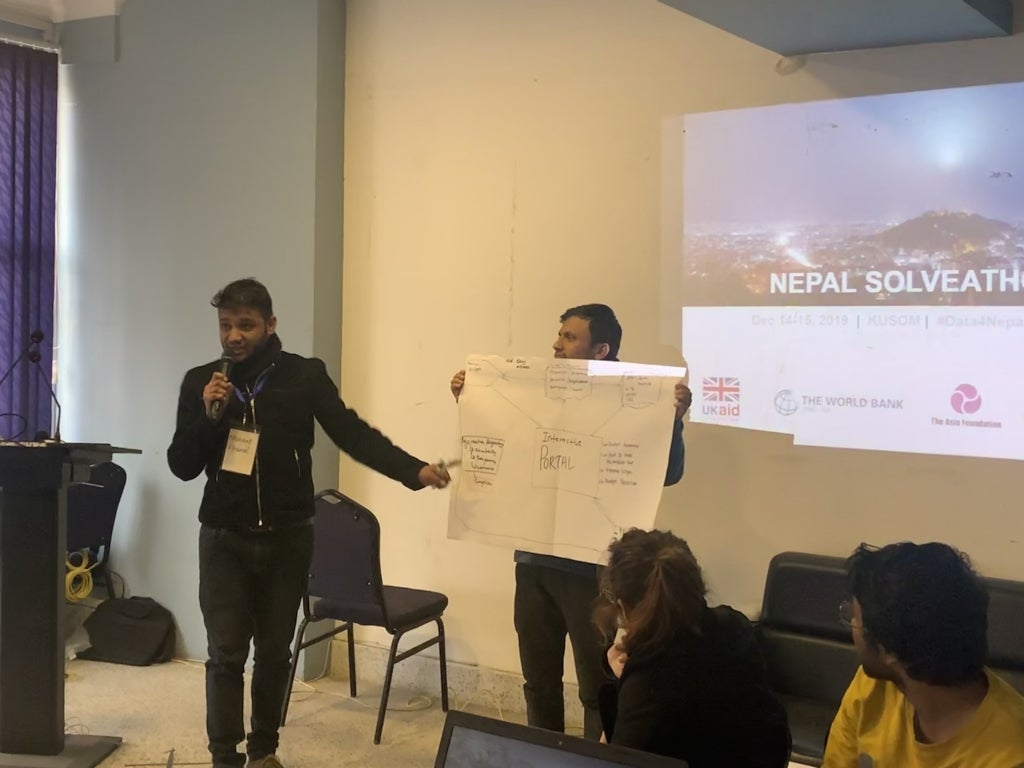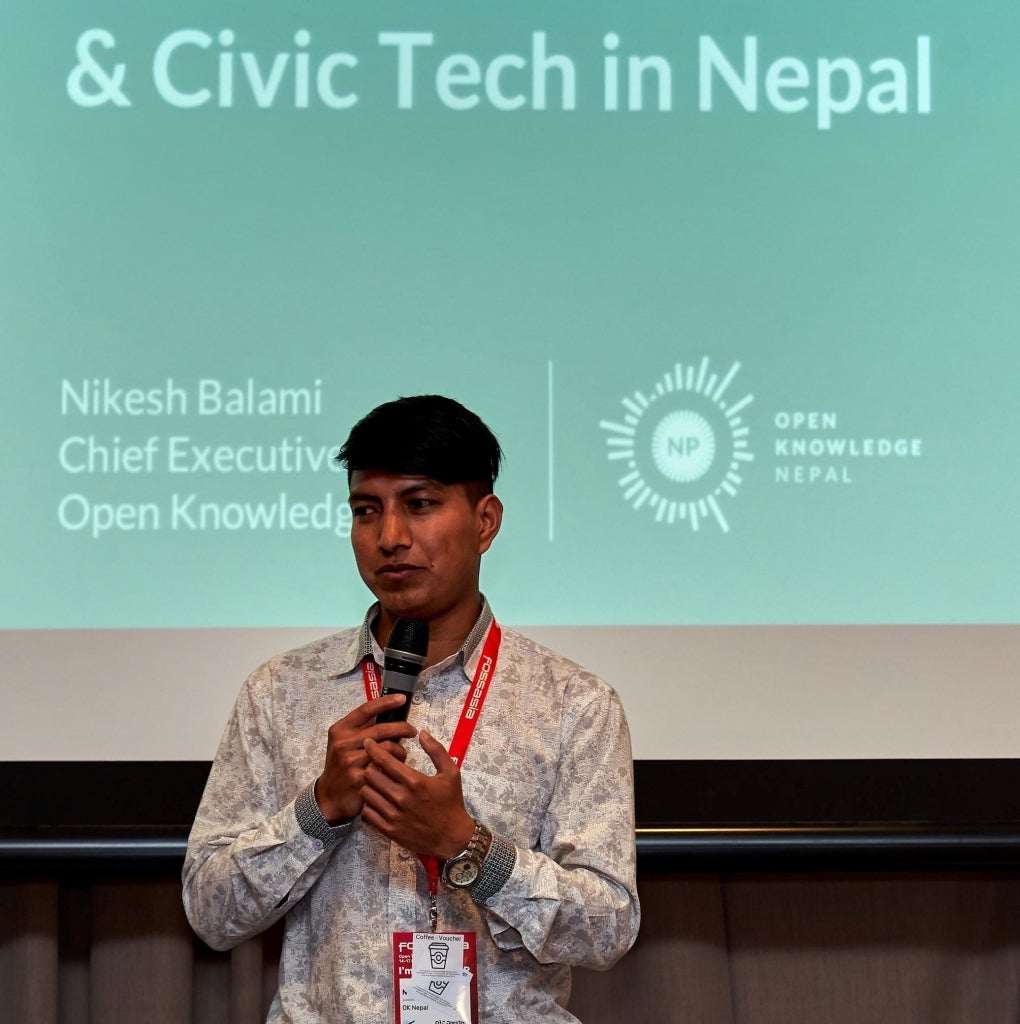 Sijal Pokhrel, in front of her computer.
Sijal Pokhrel, in front of her computer.
In the midst of the COVID-19 pandemic, when Nepal and most of the world was in an extended lockdown, the Facebook group Nepal Data Literacy Community was bustling with activity. The group set up and run by the participants of the 100-hour Nepal Data Literacy Program (NDLP) and Nepal Solveathon, has been an active platform for young data enthusiasts to share ideas, resources, and opportunities. When the pandemic hit, some members of the community saw an opportunity to collaborate and use data that would help inform people. Here’s a look at four of these initiatives.
When the pandemic hit, some members of the data community saw an opportunity to collaborate and use data that would help inform people.
Removing the language barrier
Nishant Khanal and his team were working on a provincial budget dashboard and an e-learning portal to curate information on disasters and crisis management when the COVID-19 crisis hit. They jumped at the opportunity to create a platform in Nepali that made information on the pandemic available for the general population. They manually scraped data from sources like the Ministry of Health and WHO and visualized the information in a user-friendly manner.

Their work was published on popular Nepali websites while their short informative videos on contact tracing, types of COVID-19 tests, and myths surrounding the pandemic were also shared widely through social media channels.
Going forward, Nishant is exploring how he can directly link the dashboard to government data sources so that the numbers are auto updated.
Air pollution and the pandemic
Nepal’s air pollution problem was a key area of concern for Nikesh Balami and Sijal Pokharel. Their NDLP project had focused on the role of open data in tackling air pollution in Nepal.
With the COVID-19 pandemic, they took their collaboration further and investigated the relationship between air pollution and COVID-related mortality. Because of the lack of reliable environmental data on Nepal, Nikesh and Sijal researched various studies conducted in the US and China and found a common thread: COVID-related deaths are likely to be higher in cities with higher air pollution.

They wrote an op-ed urging all concerned stakeholders to prioritize environmental health and coordinate efforts to establish more air quality monitoring stations throughout the country for micro-level assessments and data driven policies.
Visualizing Global and Local Data
Binod Jung Bogati has been using publicly available data and open source tools to analyze, visualize and curate both global and Nepal-specific COVID-related data through open dashboards.
To make the information more accessible to people, he scraped data from Johns Hopkins’ public database and visualized the data which is currently being hosted on an open source platform on Numeric mind’s website. Binod continues to engage with the data community participating in knowledge and skills exchanges.
Access and use of quality and timely data are integral for Nepal to achieve its development goals.
Analyzing Media Trends
Samikshya Siwakoti, a student at Columbia University, teamed with her fellow graduates to work on a media trend analysis of COVID-19 and a contagion model.
Samikshya used natural language processing and machine learning to analyze word level data in mainstream and social media including The New York Times, Gab, Twitter and Weibo to assess conversations around COVID-19.
“The results indicated a speedy spread of fake news, conspiracy theories, racist views and anti-science propaganda in today’s connected world. In the context of COVID-19, understanding the trend of divisive narratives in the media can help policymakers develop effective policies to mitigate the socio-economic impact of the crisis,” says Samikshya.
Access and use of quality and timely data are integral for Nepal to achieve its development goals. Programs like the NDLP and Nepal Solveathon helped create the first ripples towards a stronger data ecosystem, but these passionate young data enthusiasts are leading the way.
* The World Bank Group does not commission or guarantee the accuracy of the work presented which is the sole responsibility of the participants.





Join the Conversation